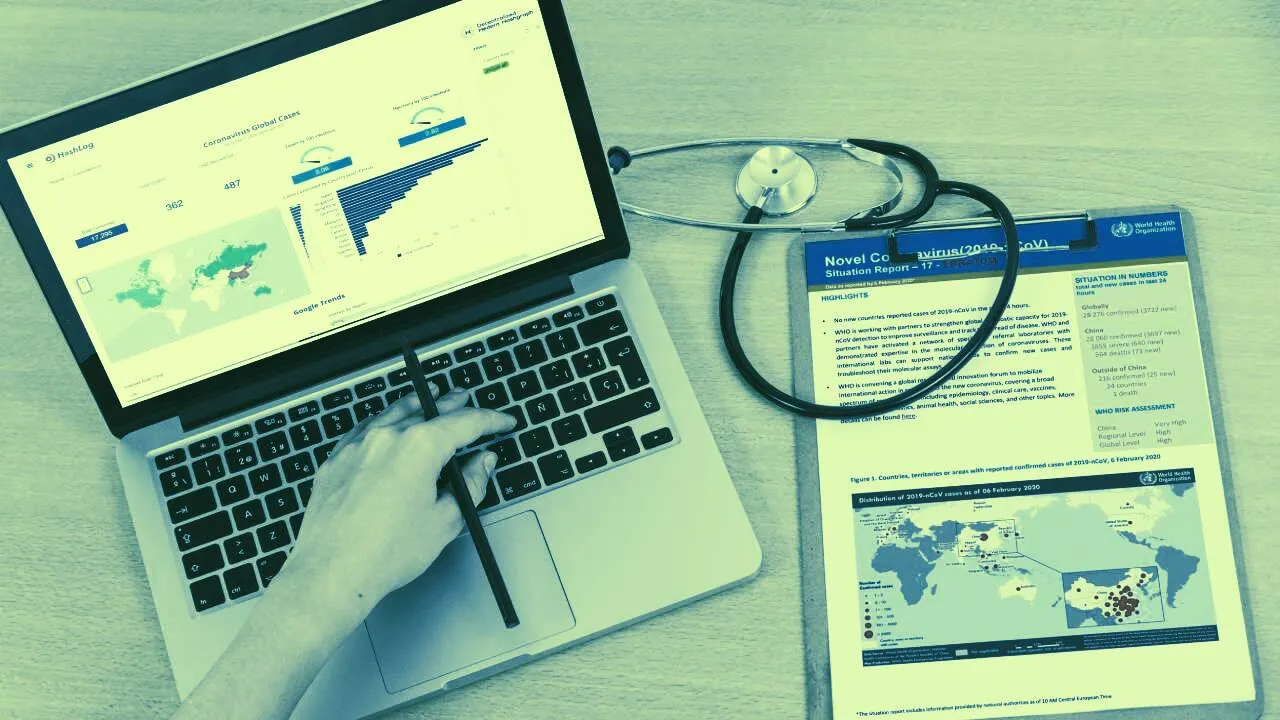A deadly strain of the coronavirus that originated in China has quickly spread across the world. It causes pneumonia; those who have it suffer from coughs, fevers, and breathing difficulties. In a matter of weeks, over twenty thousand have contracted the virus and over four hundred people have died, with the number growing each day.
The coronavirus first spread from a wet market in the city of Wuhan, where food is traded alongside live animals; the city is now under lockdown. Almost no shops are open, and wearing face masks outside is mandatory. Cases have emerged in almost every major country, including the US, Germany, and Singapore. And there’s no cure: Antibiotics are of no use, as are antiviral drugs used against flu. Indeed, the doctor who first raised the alarm about the coronavirus has himself succumbed to it.
Coronavirus: a data problem
It’s the kind of public health crisis that may not initially seem like it demands a technological solution. But according to Jim Nasr, CEO of blockchain developer Acoer, containing the coronavirus could come down to a question of data management.
“It's really a data problem,” Nasr said of the challenges facing Chinese authorities, and more broadly those faced by epidemiologists, people who study how diseases spread. “Part of their job is all to do with gathering data, verifying that data, and then cleaning up that data.”
Nasr, formerly a chief software architect at the US Centers for Disease Control and Prevention, showed Decrypt a dashboard he has created that tracks the spread of the coronavirus outbreak on Hedera Hashgraph, a distributed public ledger. It visualizes trends, such as confirmed cases to mortality rates.
Epidemiologists, Nasir explained, need high-quality data to model viruses; with models, they can provide governments with recommendations about how to contain the virus (like the decision to quarantine Wuhan). But that data is hard to come by—and if its integrity can’t be verified, it’s of no use to epidemiologists.
Using blockchain for real-time auditability
Nasr said that blockchain can be used for “real-time auditability.” Governments might be wary of sharing data for political reasons, but “infectious diseases cross geopolitical boundaries,” said Nasr. “They don’t respect borders.”
The coronavirus dashboard is just a tech demo at this stage, but Nasr’s company, Acoer, uses Hedera Hashgraph to help epidemiologists verify the integrity of records that have been uploaded to their analytics systems. Each transaction is recorded through a verified hash reference on Hedera’s ledger, meaning epidemiologists can trust data to be legitimate.
A limited public version of @acoerco's #Coronavirus Tracker is now also available:https://t.co/Rx1vZy6lep
— Hedera Hashgraph (@hashgraph) February 5, 2020
Acoer’s clients include public health and global health organizations, including projects funded by his former employer, Centers for Disease Control and Prevention.
It’s also used by forensic pathologists at the University of Alabama to visually analyze mortality data in real time. This makes the data quicker to understand, and thus also the time it takes for researchers to provide public health officials with advice on what to do.
Tracing medical supply chains with blockchain
Nasr said that the blockchain has other uses for epidemiology, such as “track and tracing” supply chains. For public health workers transporting medicine during a public disaster, such as a hurricane, blockchain can make sure that the medicine is delivered to “the right people at the right time, and to have that recorded,” he said.
Another radical idea is to use token economics to incentivize the sharing of good data. “Ultimately anything [uploaded] to a blockchain is digital data, and that data, almost entirely, is offline or analog: You’re still relying upon good data integrity at point of entry or ingestion,” said Nasr.
“If you want to track the flow of a substance; you're relying on people putting in QR codes and doing it accurately and in a timely way.” said Nasr. And a token could be used to better encourage efficiency and reward attention to such details among health-care providers, according to the Acoer CEO.
The technologies are still under development. But once built, could they stop the spread of the next coronavirus?

